

Here we’ll go through the entire journey made by coffee beans - from the cherry, on through processing and roasting, to brewing a delicious cup of joe. The eventual taste is influenced along the way by the exact type of tree, the location where it grows, the methods in place at the plantation, how the beans are roasted and the various techniques for brewing coffee.
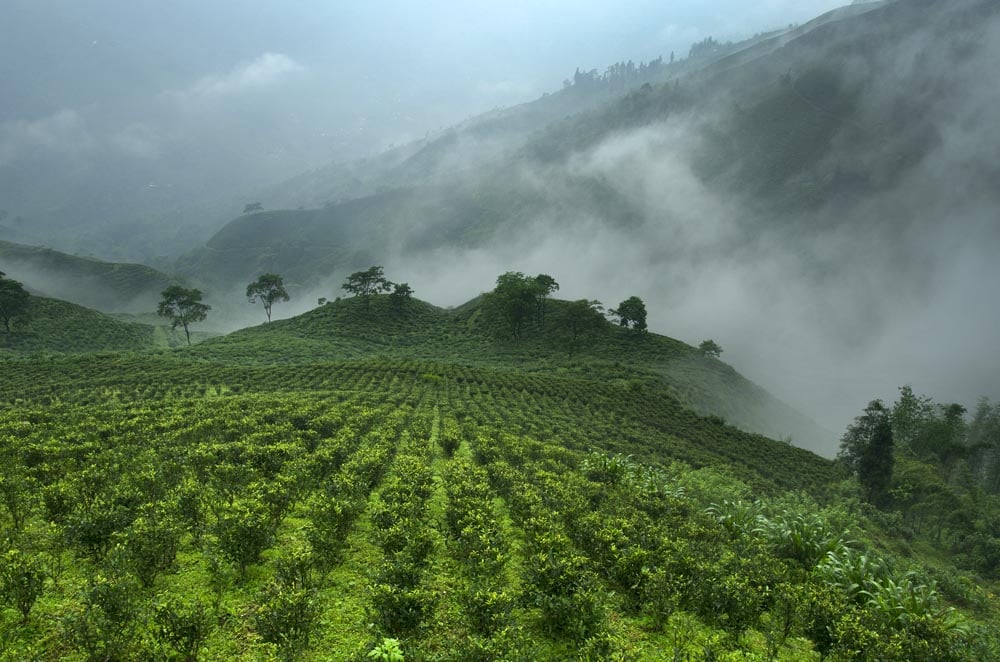
It all starts with the coffee cherry. It looks like a cherry and is the fruit of a tree that only grows in tropical countries due to the climate. Two species of tree dominate - Coffea arabica, better known as the Arabian coffee tree (amongst other names), from which arabica beans come, and Coffea canephora or the robusta coffee tree, the type responsible for robusta beans. Hundreds of Arabian varietals exist.
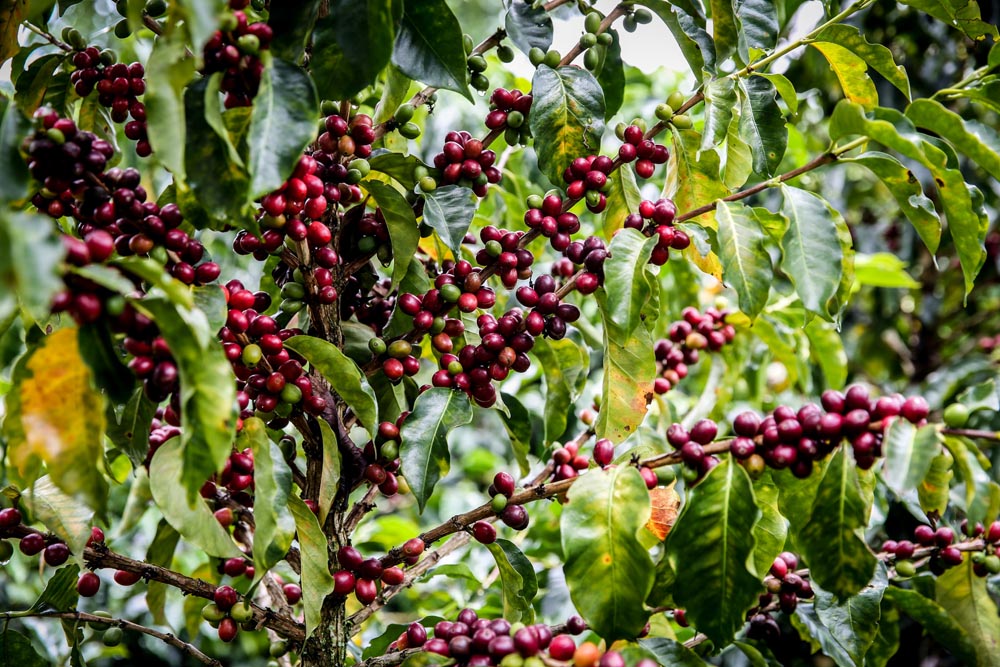
OXALIS imports coffee beans from all over the world. Our producers may harken from different countries, but they have one thing in common: the coffee cherries are harvested when at the ripest and their subsequent processing is very sensitively handled. Each coffee cherry usually contains two coffee beans in each half of the cherry, surrounded by pulp. Very occasionally, although only one might be present, referred to as a pearl.
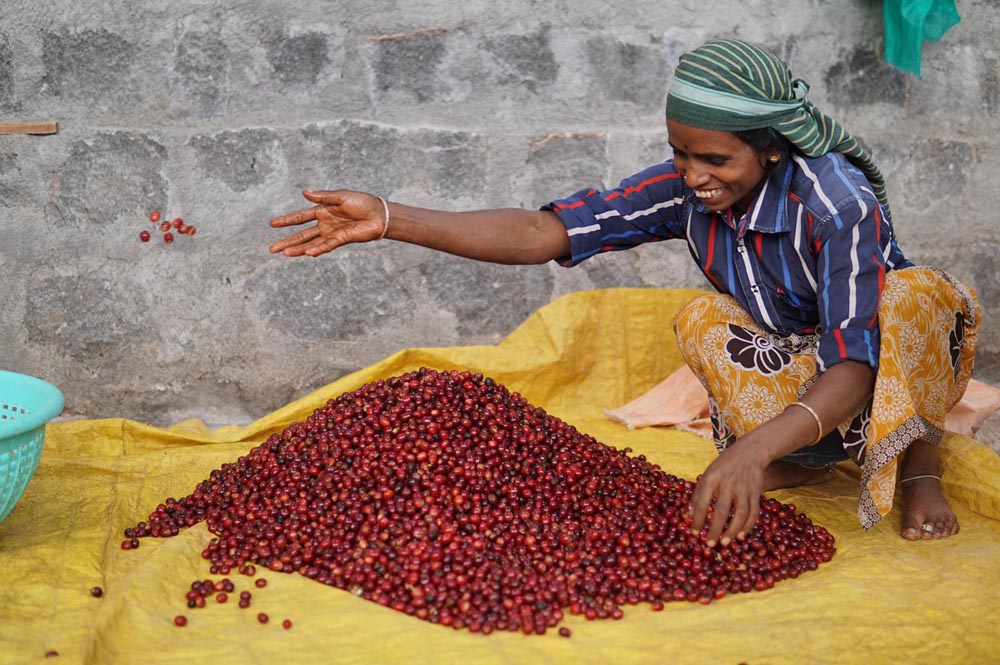
Depending on the origin of the cherries, harvesting takes place once or twice a year, although some growers are even able to do this continually. Interestingly, about 5 kg of the stone fruit is required per kilogram of coffee beans. Cherries intended for high-quality coffee are picked by hand, a demanding procedure reflecting the standard of the final product.
This brings out the natural flavour of the beans, affecting the eventual quality and taste profile of the coffee, thereby dictating its price.

Three basic processing methods exist - dry, wet and honey.
The first of these - the dry method - constitutes one of the oldest, traditional ways, while also being the least expensive of all. Coffee cherries are left out to dry in the sun, usually in a concrete courtyard. It’s best if this happens immediately after harvesting to avoid unwanted fermentation. Once the fruit drops to about 11% of its original moisture content, at approximately 2-3 weeks, the dry skin and pulp are removed mechanically.
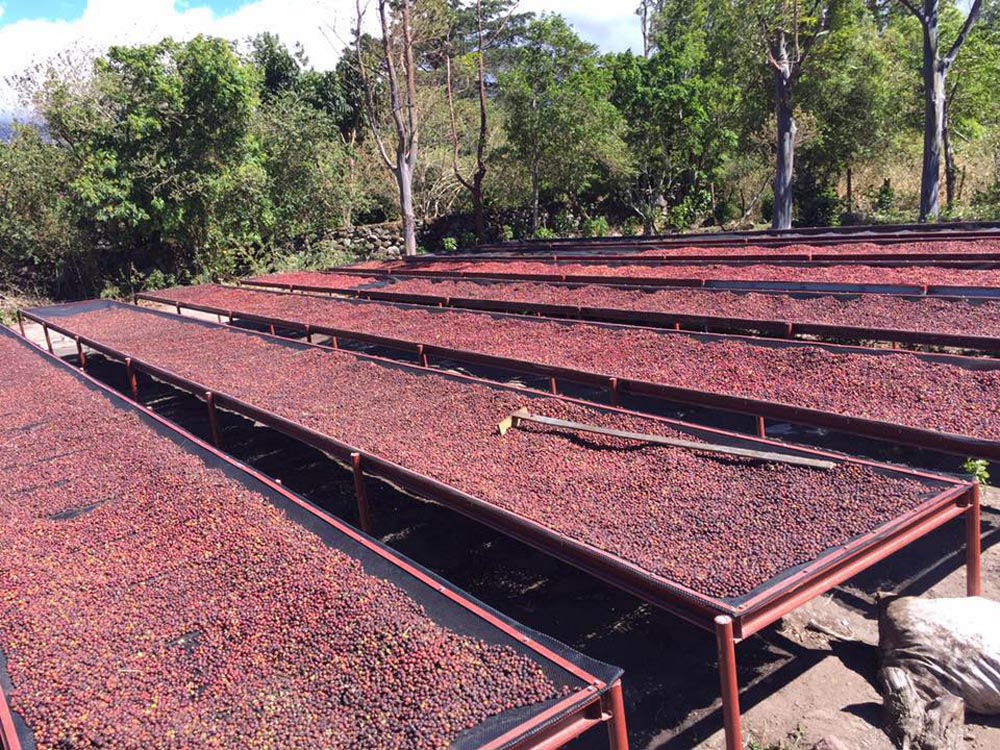
The wet method is the most common method for processing superior coffee, which hints at its terroir in the taste. It’s quite demanding, though, since several principles have to be followed, especially in relation to fermentation of the cherries. The main drawbacks are the technicalities involved and high consumption of drinking water.
A processing facility is required, and the coffee is transported by water through the various sections within it. The cherries are brought to an arrival point late in the evening and looked over before being put into a huge siphon filled with water, this being the first point at which any defective ones are removed. The cherries then pass through a press to dehull them, i.e. separating the beans from the pulp and skin, this representing the end of the line for hard, unripe cherries. The beans continue in the channel of water into fermentation tanks.
Fermenting then ensues for anywhere between 12 - 72 hours. The decision on exactly how long this takes is critical to the resulting quality of the beans, as is thoroughly cleaning the tank afterwards.
Should the climate allow for it, the beans are left to dry out in a concrete courtyard. Alternatively, mechanical dryers are employed after partially drying the beans in the sun, but solely equipment is used for this purpose under conditions of 11-12% humidity. The dryers are heated by wood burners, in which residual parchment is also burnt.
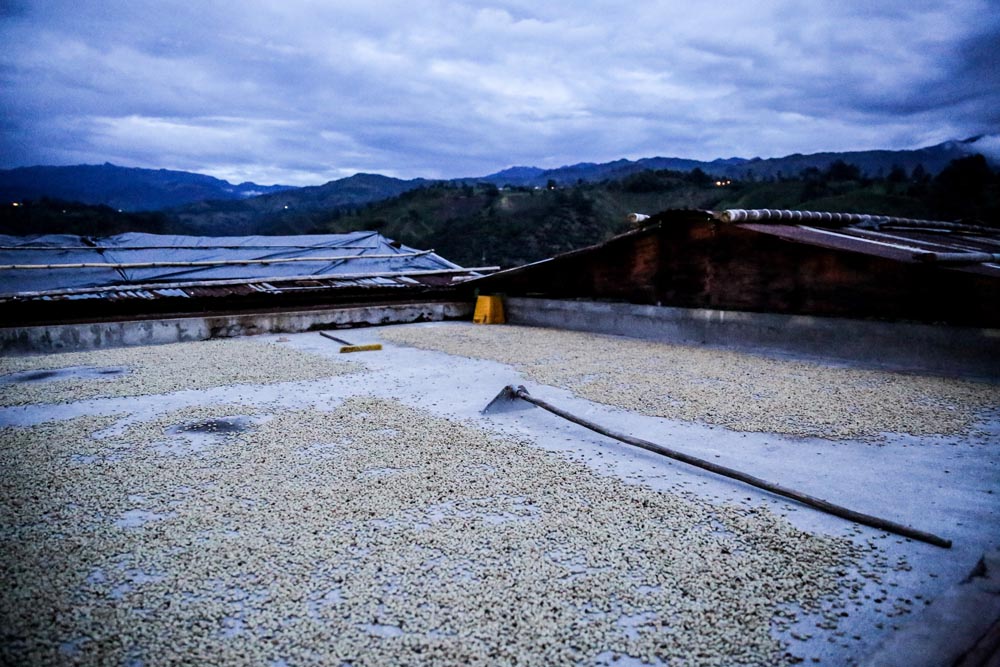
The third, very simple procedure is known as the honey method. All that’s needed is a machine for dehulling the beans, i.e. removing the skin and pulp of the original cherry. No water is utilised, so it can take place directly on a farm.
Freshly harvested ripe cherries are partially stripped of their outer skin in a press before being spread out in a layer of less than 5 cm on so-called African beds (essentially long tables) made from bamboo, mesh and artificial cloth. The beans are wrapped in fabric at night and covered with plastic to limit the effect of change in humidity.

It’s important to turn the coffee beans on the beds several times a day to avoid moisture. Any damp coffee beans that aren’t moved start to stick together, encouraging mould to grow from below, which could mean the batch is spoiled. No surprise, then, that the method is considered risky. Should something go wrong in the drying stage, an unpleasant sweetness, not unlike rotten fruit, might be evident in the eventual taste. However, farmers who know what they’re doing can reap incredible results. The best coffee processed by the honey method usually has a fine level of acidity. Although less complex than the washed type, it’s distinguished by extreme sweetness with tones of cherry, raisin, plum and ripe berries.
OXALIS carries a wonderful decaffeinated Brazilian coffee in its range, the beans undergoing decaffeination when they’re still green. European regulations stipulate that there can be a maximum of 0.1% caffeine in fresh coffee and 0.3% in the instant type. Decaffeinated coffee is ideal for people who don’t wish to expose their bodies to the stimulating effects of caffeine. Four decaffeination methods have been developed, and three of them employ a solvent (ethyl acetate, methylene chloride or carbon dioxide), while the fourth utilizes water and activated carbon. The general procedure involves swelling the green coffee beans and washing them with a solution or water, thereby releasing the caffeine. Afterwards, when only a residual amount of caffeine remains, the beans are dried.
The Brazilian decaffeinated coffee mentioned above is treated by the Swiss Water Process. This means that water in a bath washes out all water-soluble substances from the beans, including the caffeine, which alone is extracted by an activated carbon filter, and then drying takes place in special tanks. The result is decaffeinated coffee beans that retain their original aroma and taste, making the coffee suitable for a cup of espresso or pour-over at night.
OXALIS receives samples of green coffee from growers, which we roast on a small Probat unit. If the coffee’s good enough, then a batch of green beans is ordered. Once it’s delivered, the batch is inspected and a small quantity sent off to a laboratory for testing to ensure no undesirable substances or mould are present. If everything is in order, an amount is roasted and “cupped”, which means it’s sampled by a group of people who give feedback on it and determine its taste profile.
Roasting is a stage that’s both important and complex, in which temperature is applied to green coffee beans. It’s overseen by a master roaster, who has to draw on their abilities, intuition and experience, the end result being a direct reflection of their particular judgement and preferences in taste.
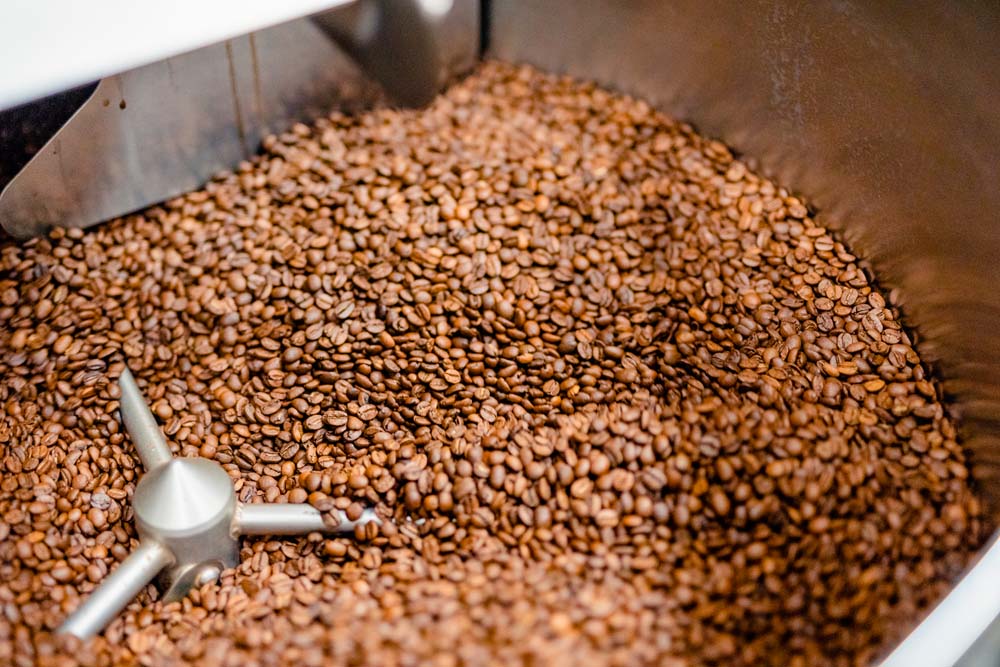
OXALIS benefits from owning an advanced machine for roasting, an American unit by Loring Smart. The advantage of this device, referred to as a roaster, is that it guarantees consistency, which means beans are always roasted in exactly the same way and taste identical in the cup. Its maximum capacity is 35 kg, although the roaster adapts to the exact amount present and the inlet temperature, adjusting the various parameters to obtain the desired roast profile. Immediately after roasting, the coffee sits or “stabilises”, since it’s still undergoing transformation, which lasts 3-4 days for filtered coffee and 12 days for espresso.
From us to you
Roasted coffee is packed as required at OXALIS HQ and subsequently transported to the warehouse. Then it’s dispatched to our stores, wholesale customers and customers of the e-shop.
We carry several types of flavoured coffee that are very popular, including some based on desserts, cakes and confections. New ones are added to our assortment each year, and every type is developed by experts at OXALIS and matched with beans that bring out the best in the taste. This all happens at our HQ in Slušovice, meaning the team is able to completely oversee quality standards and the type of ingredients utilised.
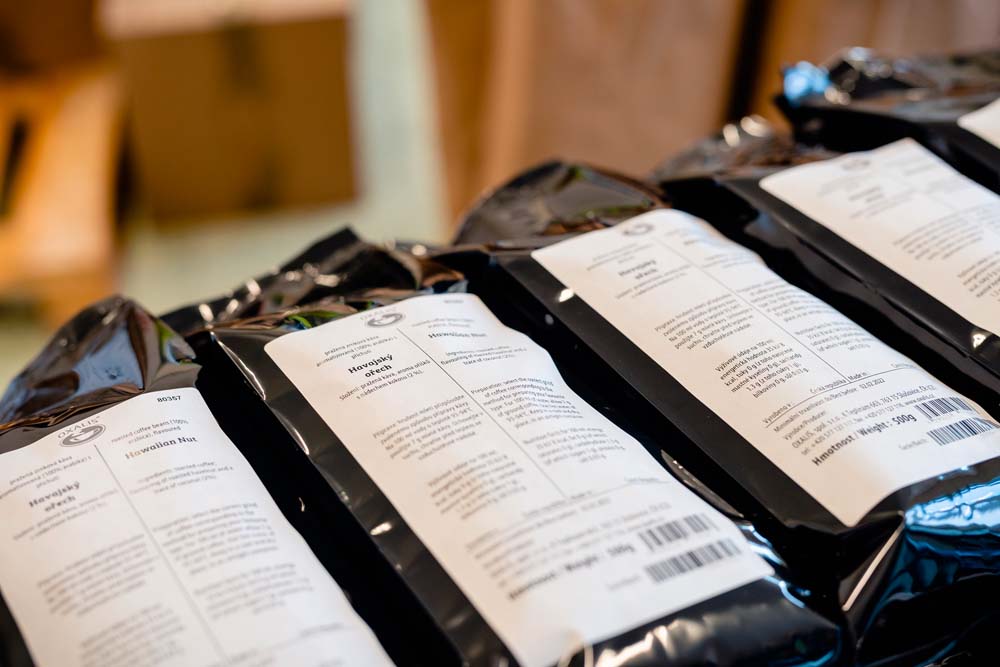
Coffee is sold on the e-shop in 150 g and 500 g packs. Specialist types of coffee are only available as whole beans, while our flavoured varieties can be bought in ground form in small packs or as beans in larger packs.
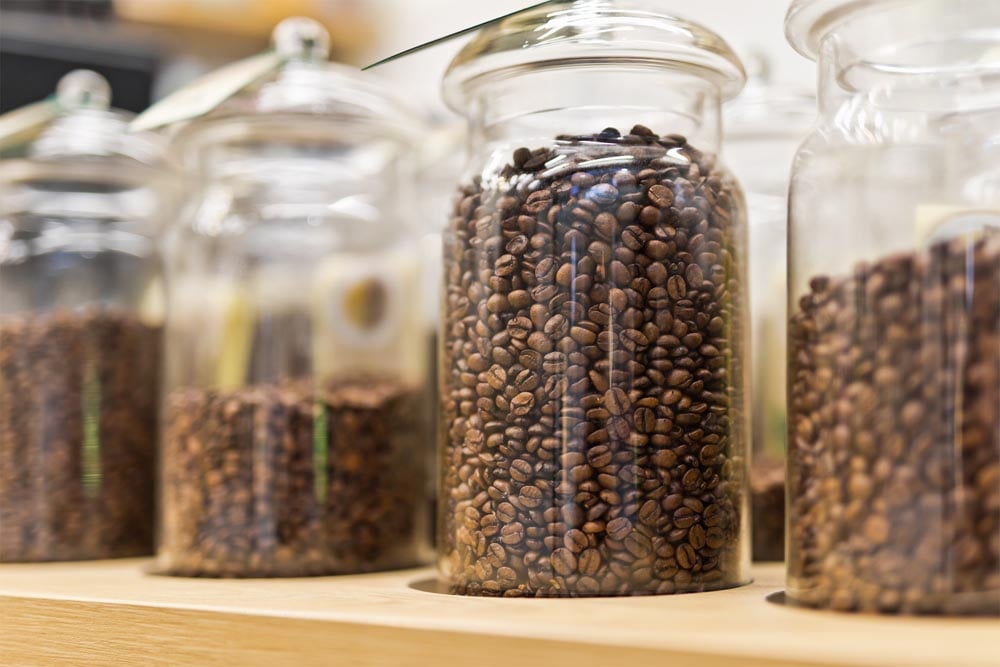
The coffee sold at OXALIS shops is displayed in glass jars to show off the colour and allow the aroma to be sampled. It’s possible to have the beans ground in the shop to the level required for the intended brewing method. Sales staff are trained and can suggest which coffee to buy to match customers’ personal preferences. Experimenting at home with different ways of preparing coffee is a good idea as the eventual taste is likely to vary.
OXALIS’ website is full of information on ways of brewing coffee, reports on visits to plantations and a host of other things. Follow us on Facebook, Twitter or LinkedIn to keep up-to-date on the latest at the company and its products.
